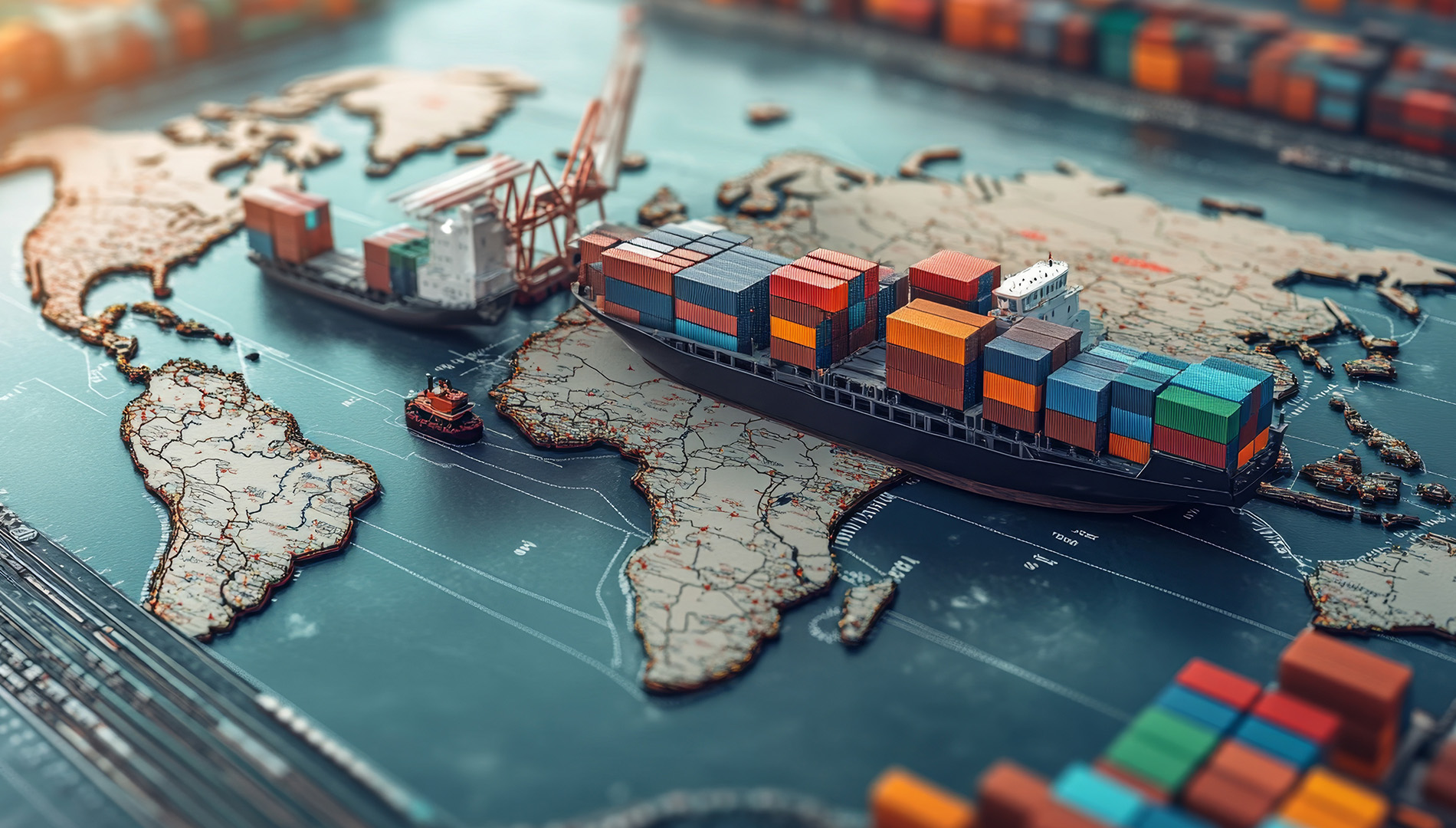The global trade landscape in 2024 showcased remarkable resilience, surging to a record $33 trillion, representing a 3.7% growth compared to the previous year, according to the latest Global Trade Update by UN Trade and Development (UNCTAD). This significant growth, primarily driven by a robust 9% increase in services trade, adding $700 billion – nearly 60% of the total growth – underscores the evolving dynamics of international commerce. While trade demonstrated considerable strength throughout the year, UNCTAD cautions that uncertainty looms on the horizon for 2025. Trade in goods also saw positive momentum, growing by 2% and contributing $500 billion to the overall expansion.
Divergent regional and sectoral performance
The expansion of global trade in 2024 was not uniform across all regions or sectors. Most regions experienced positive growth, yet Europe and Central Asia bucked this trend. Sector-specific performance also varied significantly. Agri-food, communication technology, and transport sectors witnessed gains, while energy, apparel, and extractives experienced a slowdown, attributed to weaker demand and evolving policy landscapes. Notably, the momentum of global trade decelerated in the second half of the year. In the fourth quarter, trade in goods grew by less than 0.5%, and services edged up by a mere 1%. Trade inflation neared zero as prices for traded goods stabilised in the final quarter of 2024, suggesting the dissipation of lingering post-pandemic inflationary pressures.
Developing economies lead growth and shifting trade balances
In 2024, developing economies outpaced their developed counterparts in terms of trade growth. Both imports and exports in developing nations rose by 4% for the year and 2% in the fourth quarter, primarily driven by the strong performance of East and South Asia. South-South trade, which refers to trade between developing economies, also demonstrated significant expansion, growing by 5% annually and 4% in the last quarter. China and India outperformed global trade averages. In contrast, trade in the Russian Federation, South Africa, and Brazil remained sluggish for most of the year, showing some signs of improvement in the final quarter. Meanwhile, developed economies experienced trade stagnation, with both imports and exports remaining flat for the year and declining by 2% in the fourth quarter. Interestingly, global trade imbalances returned to 2022 levels in 2024. The US trade deficit with China widened to $355 billion, increasing by $14 billion in the fourth quarter, while its deficit with the European Union (EU) rose by $12 billion to -$241 billion. China’s strong export performance pushed its trade surplus to a record high in 2024, while the European Union reversed previous deficits to post a trade surplus for the year.
Strategic trade initiatives and emerging marketplaces
Several significant developments are underway that are poised to influence the future of global trade. The European Union and India are actively engaged in negotiating a Free Trade Agreement (FTA) with the aim of enhancing bilateral trade and investment cooperation. Furthermore, India has launched the Trade Connect e-platform, a single-window initiative designed to assist exporters, particularly MSMEs, by streamlining trade processes. In Dubai, DP World has commenced the construction of Bharat Mart, a global business-to-business (B2B) and business-to-consumer (B2C) marketplace intended to facilitate trade between Indian businesses and global markets. Bharat Mart is slated to open by the end of 2026 and is expected to significantly strengthen trade links between India, the Middle East, and beyond.
Navigating geopolitical tensions and Regulatory updates
The global trade environment continues to be shaped by ongoing geopolitical tensions, protectionist policies, and trade disputes, notably the trade relationship between the United States and China. These tensions have led to tariffs and shifts in sourcing patterns towards Southeast Asia. On the regulatory front, India is actively pushing for the internationalisation of the Indian Rupee. The Union Budget has also outlined initiatives such as Bharat Trade Net and an export promotion mission, alongside reduced tariffs. Additionally, the International Financial Services Centres Authority (IFSCA) has issued guidelines for International Trade Finance Services (ITFS) operators. In response to increased US tariffs, India is considering export support measures, including extending interest subsidies on bank loans. The Indian government has also announced a ₹250 billion ($3 billion) maritime development fund to support long-term financing for the shipbuilding and repair industry. Furthermore, the Atal Innovation Mission (AIM) has been extended until March 2028.
Also Read: Invoice Factoring in Hong Kong: A Guide to Better Cash Flow
The impact of digital transformation on trade finance
As global trade faces evolving challenges, the impact of ongoing digital transformation is increasingly shaping the future of trade finance. In India, approximately 30% of supply chain finance (SCF) transactions in large-scale industries now utilise blockchain technology, enhancing transparency and efficiency. Furthermore, fintech companies are leveraging Artificial Intelligence (AI) and Machine Learning (ML) to streamline financial processes, resulting in a significant reduction in processing times, averaging around 40%. These technological advancements are crucial for improving the speed and efficiency of cross-border transactions.
Conclusion
The global trade environment in 2024 demonstrated significant growth, albeit with emerging uncertainties and a complex interplay of regional and sectoral performances. Strategic initiatives like the EU-India FTA negotiations and the development of platforms such as Bharat Mart present new opportunities, while geopolitical tensions and evolving regulatory landscapes necessitate careful navigation. The increasing adoption of digital technologies in trade finance is also transforming the industry. For companies like M1 NXT, a comprehensive understanding of these multifaceted trends and the ability to leverage technological advancements and adapt to the evolving global trade ecosystem will be crucial for facilitating seamless and efficient cross-border financial solutions.
